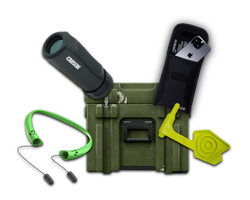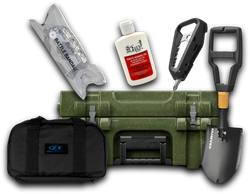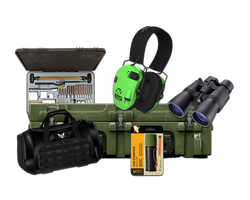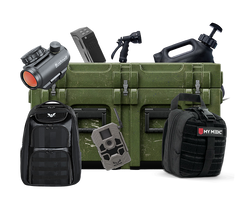How to Use a Sleeping Bag: A Comprehensive Guide for Comfort and Preparedness
Table of Contents
- Introduction
- Choosing the Right Sleeping Bag
- How to Use a Sleeping Bag Effectively
- Packing and Storing Your Sleeping Bag
- Tips for Specific Conditions
- Common Mistakes to Avoid
- Conclusion
- FAQ
Introduction
Imagine lying under a starlit sky, the crisp night air around you, feeling snug and warm despite the chill outside. This is the promise of a well-used sleeping bag. Yet, many campers, whether newcomers or seasoned adventurers, often find themselves perplexed about how to use a sleeping bag effectively. Do you know how to maximize its benefits for a comfortable sleeping experience?
Sleeping bags have evolved over decades, becoming essential gear for outdoor enthusiasts. Historically, they were simple blankets designed to retain body heat. Today, they come equipped with advanced insulation technologies, various shapes, and temperature ratings, tailored for diverse environmental conditions. Understanding how to use a sleeping bag properly is not just about sleeping; it’s about enhancing your outdoor experience and ensuring your safety.
This blog post aims to equip you with the knowledge you need to use a sleeping bag effectively, ensuring you stay warm and comfortable during your outdoor adventures. We’ll cover everything from selecting the right sleeping bag to techniques for staying warm, packing it correctly, and even maintaining it for longevity. By the end of this article, you'll be ready to tackle any camping trip with confidence.
Choosing the Right Sleeping Bag
Types of Sleeping Bags
Before you can use a sleeping bag effectively, you must first select the right one. Here’s a breakdown of the most common types:
-
Rectangular Sleeping Bags: These bags offer ample room and are great for casual camping. They are easier to move around in but can be bulkier when packed.
-
Mummy Sleeping Bags: Designed to maximize warmth, these bags are snug around the body, minimizing heat loss. They are ideal for colder climates or backpacking trips where weight and packability are crucial.
-
Semi-Rectangular Sleeping Bags: A hybrid between rectangular and mummy bags, they offer a balance of space and warmth.
-
Double Sleeping Bags: Perfect for couples or those who want extra space, these bags can often be zipped together.
Temperature Ratings
When choosing a sleeping bag, pay attention to its temperature rating. Sleeping bags are classified based on their ability to keep you warm at various temperatures:
- Summer Bags: Rated for temperatures above 32°F (0°C), ideal for warm-weather camping.
- Three-Season Bags: Suitable for temperatures between 20°F (-6°C) and 32°F (0°C), making them versatile for spring, summer, and fall.
- Winter Bags: Designed for extreme cold, rated for temperatures below 20°F (-6°C).
Insulation Types
The insulation in sleeping bags can be either synthetic or down:
- Down Insulation: Lightweight, compressible, and warm, down insulation is a preferred choice for cold-weather camping. However, it loses its insulating properties when wet.
- Synthetic Insulation: Generally less expensive and retains warmth even when damp, synthetic materials are a great choice for wet climates.
How to Use a Sleeping Bag Effectively
Preparing for Sleep
-
Choose the Right Location: Select a flat, dry area away from wind and water. If you’re near a campsite, make sure that the ground is free of rocks and debris.
-
Set Up Your Sleeping Pad: A sleeping pad adds insulation from the ground and provides comfort. Lay it out where you plan to sleep.
-
Unpack Your Sleeping Bag: Remove it from its stuff sack and let it loft for a few minutes. This step is crucial for down bags; it allows the insulation to expand and trap heat.
Getting Inside the Sleeping Bag
-
Clothing Choices: Wear moisture-wicking base layers and avoid cotton, which can lead to chills. A hat can help retain body heat, as a significant amount escapes through the head.
-
Entering the Sleeping Bag: Sit on the edge of your sleeping pad, unzip the bag, and slide your legs inside. Once your lower half is in, pull the bag up over your shoulders, ensuring that you’re nestled in comfortably.
-
Adjusting the Hood: Most sleeping bags come with a drawstring hood. Adjust it to trap warmth around your head and neck, reducing drafts.
Staying Warm Inside Your Sleeping Bag
-
Use Liners: A sleeping bag liner can add extra warmth and help keep your bag clean. If it gets too warm, you can also unzip the bag for ventilation.
-
Insulation Layers: Use additional layers like fleece blankets or clothing inside your bag for extra insulation, particularly in colder conditions.
-
Controlling Body Heat: Avoid overheating by adjusting layers. If you start to feel too warm, unzip the bag slightly or remove layers to let heat escape.
Zipping and Securing
Ensure that the zipper is fully functional before bedtime. If it snags or is difficult to close, it can lead to sleepless nights. When zipping up, make sure to keep the fabric clear of the zipper to avoid damage.
Positioning for Comfort
The position you sleep in can affect comfort. Many people find that lying on their side or back works best. If you’re a side sleeper, consider using a more spacious sleeping bag or one designed for side sleepers to avoid feeling cramped.
Packing and Storing Your Sleeping Bag
Packing for Transport
-
Stuff Sack vs. Compression Sack: Use a stuff sack for general camping or a compression sack for backpacking. The latter reduces bulk but can compress insulation, affecting performance.
-
Avoid Over-Packing: Do not force your sleeping bag into a sack; this can damage the insulation. Instead, gently pack it into the sack.
Cleaning and Maintenance
Maintaining your sleeping bag correctly will extend its lifespan. Follow these tips:
-
Regular Cleaning: Clean your sleeping bag according to the manufacturer's instructions. Most can be washed in a front-loading machine with a gentle detergent.
-
Drying: Always dry your sleeping bag on a low heat setting. Adding clean tennis balls to the dryer helps restore loft in down bags.
-
Storage: Store your sleeping bag uncompressed in a large cotton bag or hang it. Compression can damage the insulation over time.
Tips for Specific Conditions
Cold Weather Tips
- Use an Insulated Sleeping Pad: It provides an extra layer of insulation from the cold ground.
- Wear Warm Clothing: Layer up with thermal base layers, socks, and hats.
- Use Chemical Warmers: These can be placed inside your sleeping bag for added heat.
Warm Weather Tips
- Ventilation: Unzip the bag partially or use it as a blanket to avoid overheating.
- Choose Lightweight Bags: Opt for summer bags that are specifically designed for warmer conditions.
Common Mistakes to Avoid
- Using the Wrong Bag: Always match your sleeping bag to the climate and conditions. A summer bag in winter can lead to a miserable experience.
- Ignoring Maintenance: Regular cleaning and proper storage are essential for longevity.
- Not Testing Before Use: Always test your bag at home to ensure proper functionality before a trip.
Conclusion
Understanding how to use a sleeping bag effectively is a vital skill for any outdoor enthusiast. From choosing the right bag to mastering the art of staying warm, every step contributes to a more comfortable and enjoyable camping experience. Remember, preparation is key—ensuring you have the right equipment and knowledge can mean the difference between a restful night under the stars and a chilly, uncomfortable one.
As you embark on your next adventure, consider how Crate Club can assist you in enhancing your outdoor experience. With curated subscriptions tailored to your tactical needs, you can discover essential gear and tools that align with your adventures.
Whether you're just getting started or you're a seasoned tactician, Crate Club offers a range of subscriptions designed to help you make the most of your outdoor experiences. Explore our offerings today: Crate Club Subscription Services and check out our gear in the Crate Club Shop.
FAQ
Q1: How do I choose the right sleeping bag for my needs?
A1: Consider the climate you’ll be camping in, your body type, and whether you prefer a spacious or snug fit. Check the temperature ratings and insulation type to ensure optimal comfort.
Q2: Can I use a sleeping bag in a hammock?
A2: Yes, sleeping bags can be used in hammocks, but you may also want to consider an underquilt for optimal warmth.
Q3: How often should I clean my sleeping bag?
A3: You should clean your sleeping bag after several uses or whenever it starts to smell. Follow the manufacturer's instructions for cleaning.
Q4: Is it necessary to use a sleeping pad with my sleeping bag?
A4: Yes, a sleeping pad adds insulation from the cold ground and enhances comfort. It’s an essential piece of gear for camping.
Q5: What should I do if my sleeping bag gets wet?
A5: If your sleeping bag gets wet, dry it as soon as possible. If it's a down bag, avoid letting it dry too long in a compressed state. Use a dryer on a low setting with tennis balls to restore loft.
By following these guidelines, you’ll be well-prepared to use a sleeping bag effectively, ensuring comfort and safety in any outdoor setting. Remember, the right gear, combined with knowledge and preparation, is your best ally in the great outdoors. Happy camping!
Share this article



